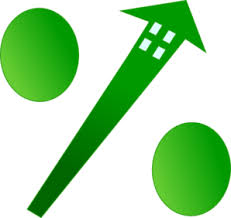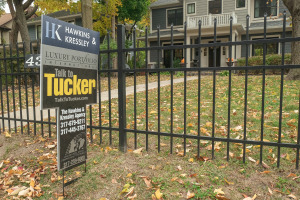
Homeowners race to refinance as mortgage rates retreat from 23-year highs
Refinance applications were up nearly 60% nationally versus the same week last year, but applications for loans to buy a home are still down from a year ago.

Refinance applications were up nearly 60% nationally versus the same week last year, but applications for loans to buy a home are still down from a year ago.

Combined with a nearly 44% increase in the national median sale price of previously occupied homes between 2019 and 2023, elevated mortgage rates have made buying a home less affordable for many Americans.

Sales of existing homes in central Indiana have fallen for 24 straight months on a year-over-year basis., but the market showed signs of improvement in January amid a small decline in mortgage rates.

Nearly 20% of outstanding debt on US commercial and multifamily real estate will mature this year, requiring refinancing or property sales.

The sharply higher home loan borrowing costs limited home hunters’ buying power on top of years of soaring prices. A dearth of homes for sale also kept many would-be homebuyers and sellers on the sidelines.

Home loan borrowing costs have been mostly coming down since late October, after the average rate on a 30-year mortgage surged to 7.79%, the highest level since late 2000.

Hunkering down with family offers breathing room to save for a home. The trade-off comes down to temporarily relinquishing a measure of independence to achieve a milestone increasingly out of reach for people their age.

Another incentive for builders: The inventory of previously occupied homes for sale is likely to remain tight because many homeowners have locked in low mortgage rates.

Homebuyers who can afford to bypass the highest mortgage rates in two decades are increasingly forgoing financing and paying all cash.

Rates have risen for the pst four weeks, grim news for would-be homebuyers already challenged by a housing market that remains competitive due to a dearth of homes for sale.

This year’s rise in borrowing costs has made commercial real estate one of the hardest-hit areas of the economy. Property sales, especially for office buildings, have slowed to a trickle, giving landlords and lenders few markers to determine the value of certain assets.

The share of homes bought without mortgages in the United States is now at levels not seen since 2014, when the housing market was on the rebound after the foreclosure crisis and the Great Recession.
Fishers-based First Internet said the decline in the housing market and the sector’s negative outlook for the next few years prompted it to get out of the consumer mortgage business.

The cold months pretty much always herald a drop in residential real estate sales. It just isn’t a great time to schlep around looking at houses. This season, however, is expected to bring a lower dip than in recent years.

Many potential homebuyers have moved to the sidelines as mortgage rates have more than doubled this year. Sales of existing homes have declined for eight straight months.
Average long-term U.S. mortgage rates jumped by more than a quarter-point this week to their highest level since 2007 as the Federal Reserve intensified its effort to tamp down decades-high inflation and cool the economy.
Rising interest rates—in part a result of the Federal Reserve’s aggressive push to tamp down inflation—have cooled off a housing market that has been hot for years.
Families spent about 24% of their incomes on mortgage payments in the second quarter, up from 19% in the previous three months and from 17% last year.
Mortgage applications have declined sharply while sales of previously occupied homes have fallen for five straight months, during what is generally the busiest time of year in real estate.
Financial markets shuddered Thursday as they adjusted to the Federal Reserve’s latest attempts to address inflation.